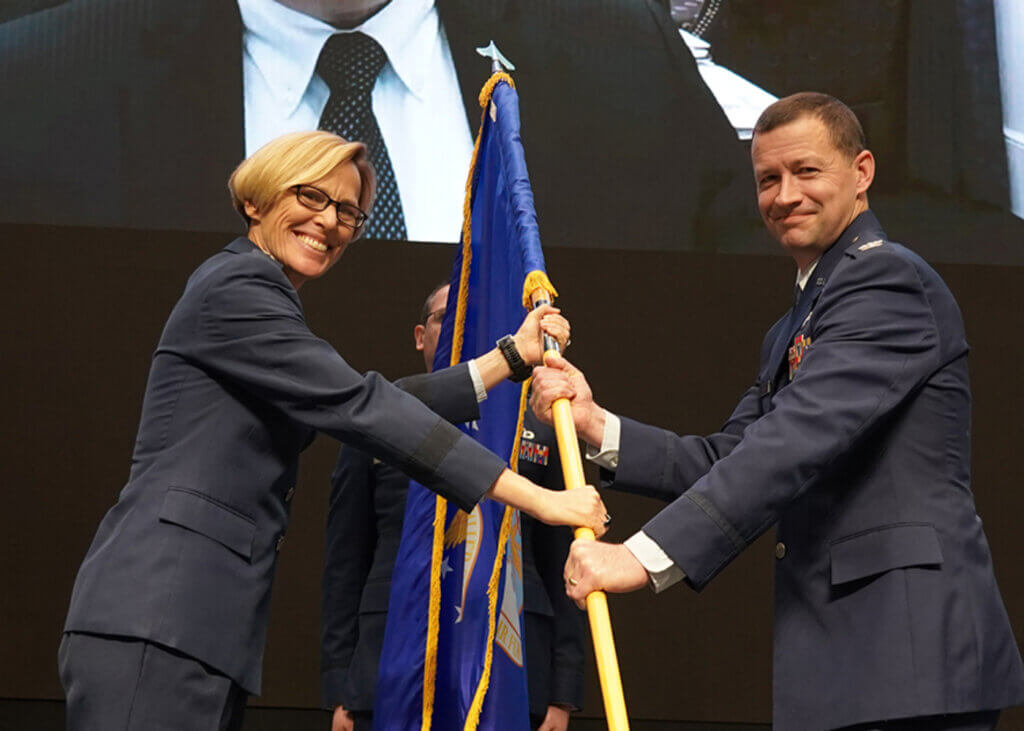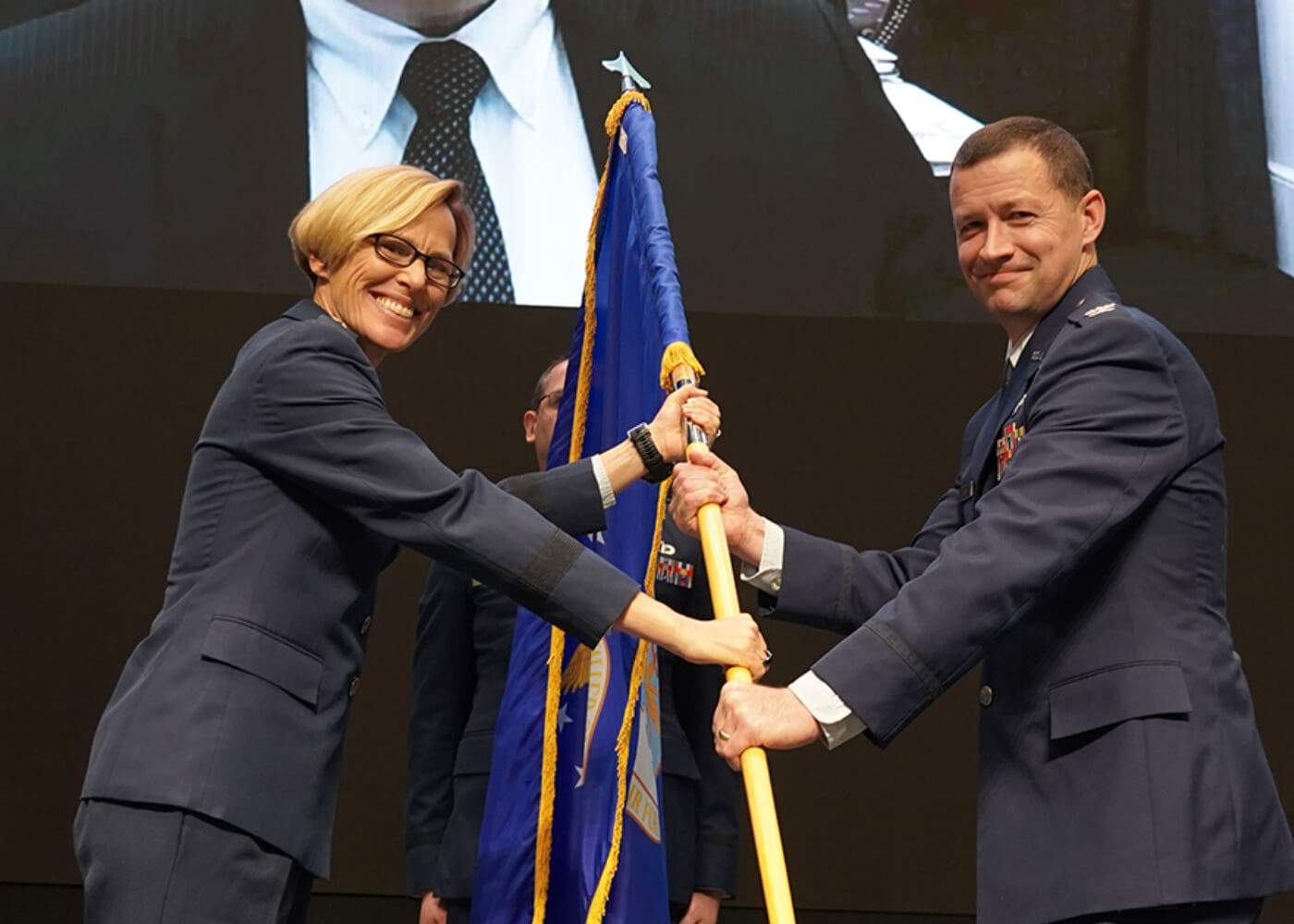Col. Elliott Leigh became AFWERX director in December 2022, taking the helm at the innovation arm behind programs like Agility Prime, which aims to support and stimulate the commercial eVTOL sector in the U.S.
At AFWERX, he now leads an Air Force Research Laboratory (AFRL) directorate that comprises several divisions, including AFVentures, which invests in emerging technologies, and Spark, which aims to build connections between military personnel and the commercial sector.

In late 2022, the AFWERX effort transitioned to AFWERX 3.0, with an aim to further expand its investment efforts, cut barriers to classified work, and more. This focus includes SpaceWERX, which falls under AFWERX and focuses on the space sector.
Agility Prime has provided eVTOL specialists with test and evaluation support, access to Federal Aviation Administration (FAA) and NASA partnerships, and financial backing through contracts for early use cases. There is a strong overlap with other Prime efforts, notably Autonomy Prime, which supports the development of autonomy technologies in the U.S. commercial sector.
Leigh entered the U.S. Air Force (USAF) in 2002 and has served in a variety of positions, from an experimental flight test engineer to chief of the B-21 Raider development test program. He was most recently materiel leader for the Special Programs Directorate in the U.S. Space Force.
In an interview with Vertical, Leigh outlined his vision for the future development of the eVTOL sector and upcoming goals for AFWERX.
This interview has been edited for length and clarity.
Vertical: Have you worked with the eVTOL sector before in your USAF career? Are there any aspects of the industry that particularly interest you?
Col. Elliott Leigh: In my prior assignments, I was working ‘big’ Air Force programs, so bombers, fighters, weapons. Now that I am in AFWERX, I’m seeing a lot of the technologies of the future, and I’ve had the opportunity to engage with end users in the Air Force who are also very interested in this technology.
It’s been fascinating to look at what is going on in the private sector and realize how far behind we are. For the Air Force, this kind of technology has been ignored for a long time. And I think part of standing up AFWERX is realizing that we don’t want to get into that situation again — we want to be able to identify potential game-changers, like eVTOLs, and get our foot in the door early to help move it along faster.
We have a lot of tools and resources to help with that. We have test ranges and test pilots. We have relationships with the FAA. We’re bringing in companies that have concepts, and working with them to help test and train.
Vertical: What are the military benefits of growing this commercial base?

Col. Elliott Leigh: If you go back in time, there was a period when the military really did drive a lot of the innovations. There’s a lot of great history in World War II and during the 1960s with the space race, where we were driving that because we were in the middle of a great power competition.
But over the last several decades, we’ve just seen a lot more research and development in the private sector. You think about things like an iPhone and what you can do with that today — that’s not a military-driven innovation, but a soldier can look at that and say, ‘Hey, there’s a lot I can do with that device.’ And in turn, that has driven other key technologies: batteries getting smaller is just one example.
Woe to the military that can’t keep up with their own private sector because they’re going to be vulnerable.
Vertical: Are there any particular technologies that you think should be promoted through Autonomy Prime or Agility Prime?
Col. Elliott Leigh: When we think about eVTOLs, it brings to mind a lot of other fundamental technologies. One of them is additive manufacturing — the ability to produce vehicles in ways that we’ve never done before. We see that across the whole AFWERX portfolio. Many of the small businesses that are winning contracts with us are using additive manufacturing as part of their business model. Just by having AFWERX and having contracting opportunities for small businesses, we are accelerating additive manufacturing, and that in turn will accelerate eVTOLs.
Another one is the algorithms that go into autonomy. In the U.S., we’re interacting with the FAA, and we’re thinking about policy and how we can open air corridors where we can have autonomous vehicles flying through civil airspace. That’s an area where we can really help to enable testing and prove that the autonomy and the algorithms that drive it are safe for flight of a vehicle through civilian airspace. That’s a key piece of it.
Another piece is power generation — being able to generate electrical power and put the charging stations across the nation so that there is infrastructure that allows the vehicles to fly, land, recharge and keep going.
Vertical: What are the connections between Agility Prime and Autonomy Prime?
Col. Elliott Leigh: We look at autonomy as the next thing that we want to focus on and accelerate. I also think that there’ll be some synergy between Autonomy and Agility. When we use our imagination and we think about what we might do with eVTOLs in five or 10 years, you can picture a vehicle that’s quiet, doesn’t need a runway, has much fewer moving parts, and has much less of a logistics footprint. All you need is a charging station. There are so many advantages there.
Imagine if I had swarms of these things and they were unmanned. Think of all the material we could move, think about combat search-and-rescue with a drone, think about aeromedical evacuation — all the applications really start to open up.
Vertical: What do you think are the major challenges in developing a viable eVTOL sector in the U.S.?
Col. Elliott Leigh: On the regulatory side, this is in many ways no different than any new technology. We want to make sure that as we’re doing testing and evaluation, we’re addressing concerns over time, building trust in the technology so that it can be used both for the commercial sector and for the military.
On the development side, we’re really pushing the envelope when it comes to things like battery technology. For now, that keeps us to the smaller scale, lighter payload and shorter range. As we continue to advance energy and battery technology, we think we’ll see more capability out of some of these aircraft.
You’re not going to see the next fighter being electric — you just don’t have the power for that. You’re not going to see the next heavy airlift aircraft being electric, but that doesn’t mean that won’t change in 20 or 30 years from now. There’s definitely space for an aircraft that can do that in the Air Force, which just creates the foothold for the technology to develop further. We’ll see where it goes from there.









